Grapes & Juices in Stock as of 9/21/17 at 9:27AM
JUICES: All varieties in stock – Cry Baby & California Select labels
Grapes in Stock as of 9/21/17
– Caterina Petite Sirah
– Lodi Gold Pinot Grigio
– Lodi Gold Albarino
– Zinderella
– Valley Beauty Zin CPC
– Uva di Cal Cairgnane
– Teaser Grenache
– Caterina Old Vine Carignane
– Pia Malbec
– Cry Baby Grenache
– Cry Baby French Colombard
– Pia Zinfandel
– Caterina Cabernet
– Caterina Petite Sirah
– Cry Baby Tempranillo King River
– Caterina Old Vine Zinfandel
– Uva di Cal Ruby Cabernet
– Pia Cabernet Sauvignon
– Caterina Merlot
– Cry Baby Muscat #42
– Pia Cabernet Franc
– O’Caprio Alicante #42
– Pia Ruby Cabernet
– Pia Sangiovese
– Smiling Baby Barbera
– Smiling Baby Sangiovese
– Lodi Gold Cabernet Sauvignon
– Lodi Gold Chardonnay
– Costamagna Pinotage
– Cry Baby King River Syrah
– Costamagna Viognier
– Cry Baby Grenache
– Cry Baby King River Cabernet Franc
– Lucerne Alicante #42
– Smiling Baby Thompson Seedless #42
– Caterina Thompson Seedless #42
– Lanza Chardonnay
– Lanza Sangiovese
– Lanza Primitivo
– Lanza Barbera
– Lanza Malbec
– Lanza Muscat Cannelli
– Uva di Cal Paso Robles Cabernet Franc
– Costamagna Syrah
– Smiling Baby Merlot
– Paso Robles Pinot Noir
– Cry Baby King River Cabernet Franc
– Costamagna Merlot
– Cry King River Zinfandel
– Cry Baby Sangiovese
– Pia Sauvignon Blanc
– Pia Sangiovese
– Old Vine Black Muscat Cry Baby
– Valley Beauty Zinfandel
– Cabernet Malbec
– Pia Zinfandel
– Smiling Baby Malvasia Bianca
– Uva di Calfornia Mixed Black
– Cry Baby Muscat #36
The Winemaker’s Think Tank: Vol 31 – How do I bring down my Brix?
What’s the Winemaker’s Think Tank?
Every Thursday we will post about a few frequently asked questions that our winemaker has answered. If you have a winemaking question you would like to have answered, please email us at support@juicegrape.com and we will try to get into next week’s post. Cheers! 🙂
How do I bring down my Brix?
Sometimes the beautiful California weather can ripen our wine grapes a little too much, sending sugar levels very high. Any grapes with an initial Brix reading over 28 degrees, should be considered high and a winemaker must use caution when fermenting them. The sugars are fermented into alcohol, so many home winemakers think “I will just have a nice strong wine”. While this is correct, the high alcohol levels can lead to a stuck fermentation as the accumulating alcohol levels will begin to kill the yeast. It is very important when selecting your yeast strain, to make sure that is has an alcohol tolerance high enough to handle the sugar in the grapes. You can figure out the end alcohol by volume by multiplying the initial Brix level by .55. Make sure the yeast can handle this end ABV. Another factor to consider is the balance of the wine. Having a very high alcohol content (>14%) can lead to a burning sensation upon ingestion and some off flavors in the wine.
Now that we have covered why you may want to bring down your Brix levels, now how does one go about it? You can add water, but because water has a neutral pH, you must add acidulated water as to not bring down the pH of the juice. If your grape must has a pH of 3.6, you must add 3.4g/L of tartaric acid to the water to lower its pH to make it the same strength as the wine must. Then how much water to add? Use the Pearson’s Square formula of the desired amount being equal to the volume of juice in liters multiplied by the desired brix minus the actual brix then divided by the brix of water (zero) minus the desired Brix.
In example, if you have a 5 gallon batch of juice at 28 degrees Brix and would like to add water to bring it to 24 degrees Brix, first convert the gallons to liters by multiplying by 3.78 L/gal. This gives you 18.9 liters. Minus the desired Brix of 24 from the actual Brix of 28, to give -4. Multiply the volume by the -4 to give -75.6. Then take the Brix of the additive (water which is zero) and subtract from that the desired Brix of 24. This will give you -24. Then the volume needed is simply -75.6/-24, which gives you 3.15. You would need to add 3.15 liters of water to reduce your Brix from 28 to 24.
We hope this information helps with your winemaking. If you have any follow up questions or winemaking questions in general, please email us at support@juicegrape.com.
Wine Class Schedule
We have a bunch of classes coming up! Make sure to RSVP via Facebook or Sign Up via the website!
Saturday September 23rd: Common Winemaking Mistakes (FREE) at 10:00AM – RSVP by clicking HERE
Saturday September 30th: Winemaking 201 – Winemaker Lab Skills ($75.00) at 10:00AM – sign up by clicking HERE
Saturday October 7th: Winemaker Bootcamp ($150.00) at 9:00AM – sign up by clicking HERE
The Winemaker’s Think Tank: Vol 30 – How do I test for pH?
What’s the Winemaker’s Think Tank?
Every Thursday we will post about a few frequently asked questions that our winemaker has answered. If you have a winemaking question you would like to have answered, please email us at support@juicegrape.com and we will try to get into next week’s post. Cheers! 🙂
How do I test for pH?
Testing for pH is a reasonably simple process for your wine. Based on your budget, you can obtain a variety of pH measuring implements. There are pH test strips that will give you an approximate level of pH in your wine. They give a color reaction that when compared to a chart, indicates the pH of the wine. The next level up in sophistication as well as price is a basic pH meter. Musto wine grape offers a simple handheld pH meter that can be calibrated in a matter of minutes and gives precise and accurate pH readings. The probe must be stored properly in a storage solution to ensure that it does not dry out. The probe lasts from 12-18 months, depending on its care and must be purged after this time frame. With the most basic model, you throw out the entire unit and buy a new one. With the more sophisticated models of pH meters, the probe is replaced separately from the unit (which should last indefinitely).
We hope this information helps with your winemaking. If you have any follow up questions or winemaking questions in general, please email us at support@juicegrape.com.
Musto Crush Crew Pre-Harvest Traditions
Ever wonder how we prep for harvest?
Frank Musto: “I always pick up two new pairs of work shoes in August, make sure I break them in before season. I usually burn through two pairs each season….Food of choice is McDonalds, nothing takes the pressure of a hard day like a Big Mac, large fries, and a diet coke…After Labor day, I kiss my wife good bye, pet the dog behind the ears, and tell them ill see them in late October.”
Christina Musto: “I’m usually pestering all of the growers for photos of the vineyards. Then I get my house into “harvest mode” stocking up on beer, cider, frozen meals, and chocolate. Finally, I treat myself to purchasing a special bottle of Schramsberg Brut Rose as an “in case of emergency” bottle.
Patrick Milio: “I bid farewell to friends and family, stock up on Beer, Bourbon, and Bubbles to enjoy after long days at the shop, and pre-emptively apologize to my digestive system for the terrible nightly takeout meals that are to come.”
Colin Mulryan: “I go through all of my old clothes to wear for the season, because it all gets thrown out at the end. And stock the fridge with beer.”
Ken Milio: Our Harvest tradition starts the week before as its time to clean and sanitize last year’s Crusher / Destemmer, Fermenting tubs, Must Plungers and other small items. You can tell how much wine was consumed last year by the cleanliness of the equipment this year. On crush day, our tradition is that all involved toast the new season with a shot of “ Honey Grappa “. After the crush, we again clean and sanitize the equipment then the drinking and eating begins.
Frank Renaldi: “The first thing I do to prepare for harvest is to think of another way to trick my wife into thinking I am not making a lot of wine. Last year I told her she miscounted the number of cases of grapes on the truck. The year before I told her each case of grapes weighed 10 pounds.
Then I get down to business and take inventory of my supplies and order what I need by July. I also decide on the grapes I want to work with and reserve my order. Then I check all my equipment to make sure it is ready for the big day. I talk to all my wine making friends and we get excited like little kids getting ready for their first day of school – well it does happen at the same time of the year. I think this year I will tell my wife, I had to buy more because the grapes were smaller this year.”
Barry St. Pierre: “First thing is to make and freeze a big pot of chili…for friends who stop by to help or for ourselves when we are too tired to make anything else. Full tanks have to be bottled or moved to free up space for new grapes and wine. Of course we pre-clean all of our equipment, especially our feet…need to be sure to remove all toe jam. By now all supplies are ordered, especially grapes from Musto…I seem to always get yelled at for not ordering early enough. Then sit back, open a bottle of wine, and wait for the grapes to ripen and arrive.”
Robert Herold: “As the harvest/crush/press day approaches, I start fortifying myself with wine several days in advance. For the actual activity day, nothing works as well as beer to make the task go smoothly. To quote a very good winemaker friend of mine, ‘it takes a lot of good beer to make a good wine’.”
Winemaker Spotlight: Greg Ambrose
My wine passion started 17 years ago when my father officially started to teach me to make wine. He had tried unofficially in the early 70’s but I was a reluctant 7 year old with other things on my mind. I began making wine from grapes with a friend and we started with a single 30 gallon barrel. We picked up grapes from a local distributor and worked out of my friends single car garage (half full of lawn tools).
We spent the next 9 years trying to source better grapes, each year looking to step up in quality. And then the Musto team contracted with the Lanza family which made a tremendous improvement in the quality of our wines. I still search for higher quality grapes but have come to the realization that we are now working with the best possible fruit available.
Our coop now consists of 7 families and we have outgrown the single car garage. We moved production to my double car garage which has been converted to our crush pad and fermentation room. The garage has been insulated, painted and new lighting and an exhaust system installed. The Musto family now ships us over 5 tons of grapes each fall.
We receive grapes and clean all our equipment on day 1 and crush the grapes on day 2. Crush day is filled with music, great food, wine, more food then more wine. It’s truly Christmas, New Years and the Super Bowl all rolled into one! With a lot of hands to help, we run a sorting table to clean the grapes and then load the crusher destemmer. We ferment in 15- 500 liter tubs and produce around 350 cases of wine. The tubs completely fill the garage and after a short cold soak they ferment for about 10 days. We usually order 6-7 varieties with each family making their own blends we end up with 10-15 wines styles.
Mid day the 30 of us stop working and sit down for lunch. It’s always at a single long table and we eat as one big family. This has become an important tradition with family and friends and includes toasts and short speeches and plenty of laughter. It’s a very special day and it actually gets me emotional even to write about it.
Pressing two weeks later is another story. It’s takes us two full days to press and then deliver the wine to each of the seven homes. Using pickup trucks, food grade drums, pumps and long hoses, we deliver wine to each house in the same way oil deliveries are made. We pump the wine down into each cellar and fill the barrels at each house. It’s more of a working weekend than crush day but we still mange to fit in great food and great wine. After making delivery runs we assemble back at the crush pad/garage for clean up. The day always ends up with a post event review. With more food and wine, we talk about how things went this year and suggestions for improvements to our process that we might make next year. Usually there is robust conversation about who stood out as an MVP and they receive an ovation.
The Musto and Lanza families are fantastic partners and we consider them part of our family.
Want to be featured in the “Winemaker Spotlight” series? Send Christina an email with a description about your harvest traditions and photos of your winemaking cellar to cmusto@juicegrape.com to be featured!
The Winemaker’s Think Tank: Vol 29 – How do I test for Brix?
What’s the Winemaker’s Think Tank?
Every Thursday we will post about a few frequently asked questions that our winemaker has answered. If you have a winemaking question you would like to have answered, please email us at support@juicegrape.com and we will try to get into next week’s post. Cheers! 🙂
{refractometer used in vineyard for brix levels}
How do I test for Brix?
There are two ways to test for Brix in your grape juice and/or must. Prior to the addition of yeast and fermentation, one may use a hand refractometer to measure the sugar content (Brix) of the grapes. First the sampling method must be discussed. Simply taking one grape and squeezing it on the refractometer is not an accurate measurement of the entire batch, it is only reflective on the sugar content of that grape. The most accurate way to measure Brix would be to crush and process the grapes into a fermenting tub, punch down to thouroughly mix the must and allow to sit for 24 hours. This will create a more homogenous product from which to draw a sample. Using a hydrometer is simple, place a drop of grape juice on the lens of the hydrometer and lower the plastic coverslip. Hold the refractometer to your eye and look towards a bright light source. The light gets refracted by the sugar and will form an indicator line on the lens inside of the refractometer. This lens has a marked measurements column which will then give you your initial, pre-fermentation Brix level.
Once yeast has been introduced to the must and begins to excrete alcohol, the refractometer loses its accuracy. This is when the hydrometer becomes more useful in this instance. To use the hydrometer, you will also need a cylindrical container; a graduated cylinder works well (the cylinder must be taller than the hydrometer). Pour a strained sample of the must or juice into the sanitized cylinder. Put the sanitized hydrometer into the cylinder and spin it slightly to dislodge any bubbles that may cling to the sides of it. Allow it to come to rest in the juice and observe the meniscus of the liquid and where it falls on the gradients of the hydrometer. This will give you the Brix level of the fermenting wine. As the wine ferments, the Brix level will continue to drop until it is at zero.
We hope this information helps with your winemaking. If you have any follow up questions or winemaking questions in general, please email us at support@juicegrape.com.
Grower Harvest Traditions
As harvest begins we chatted quickly with some of our growers about these harvest traditions. Some of them might surprise you….
Ron Lanza of Lanza-Musto Vineyards in Suisun Valley Shared His Harvest Rituals:
Which grapes do you harvest first? Sauvignon Blanc
Do you have any traditional harvest meals or snacks? McDonalds is our harvest snack of choice
Any other fun harvest traditions? We have a relaxing family dinner before the craziness starts!
Paul Poutre of Delta Packing in Lodi Shared His Harvest Rituals:
Which grapes do you harvest first? Viognier, Chardonnay, and Pinot Grigio
Do you have any traditional harvest meals or snacks? Taco Trucks are our meal of choice during harvest
Any other fun harvest traditions? We watch the God Father series to kick the off season
Tony Guerriero of Guerriero Packing in Madera Shared His Harvest Rituals:
Which grapes do you harvest first? Syrah, Thompson, Zinfandel
Do you have any traditional harvest meals or snacks? I eat a lot of beef jerky.. and have been known to have a pizza box on the forklift with me
Any other fun harvest traditions? My Dad firing me about once a week, lol!
What are your harvest traditions? Want to write a blog post about your harvest traditions? Email cmusto@juicegrape.com for more details.






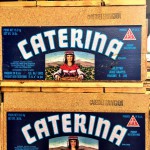
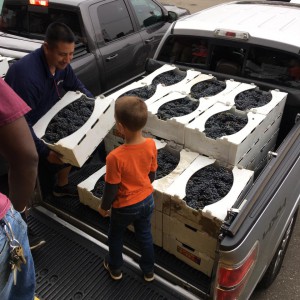
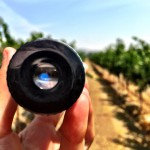
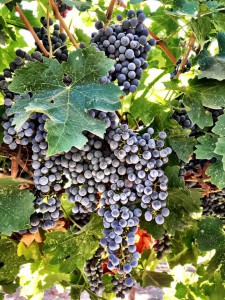
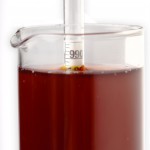



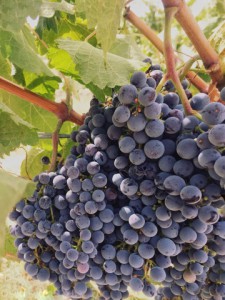

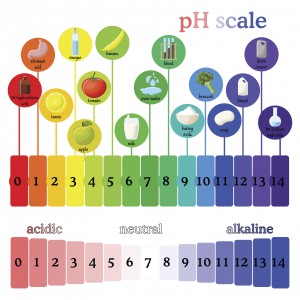
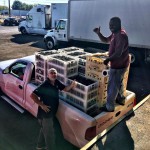

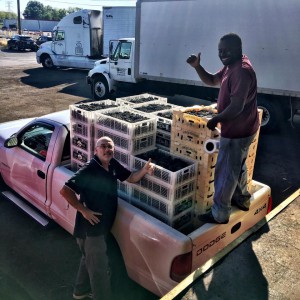
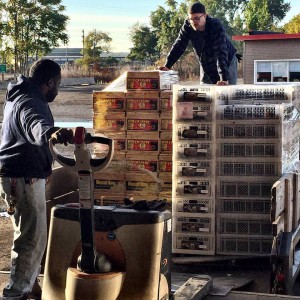

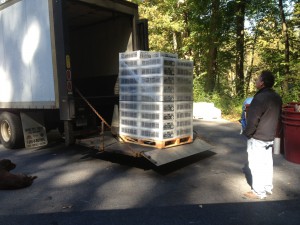
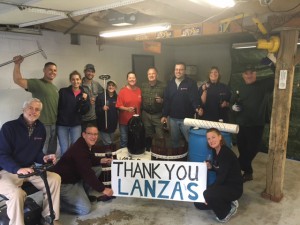
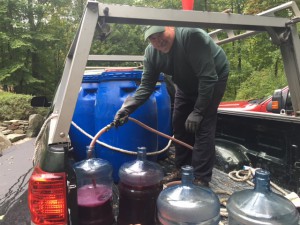


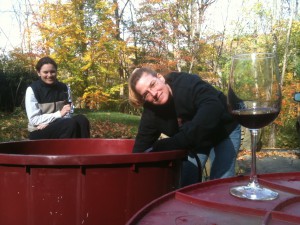

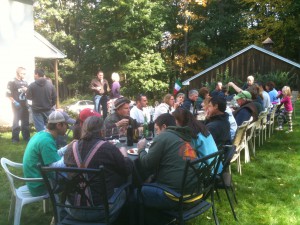
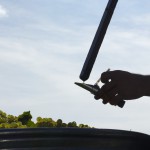
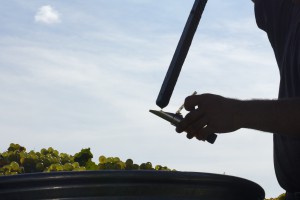
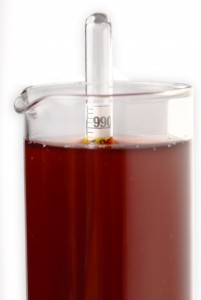
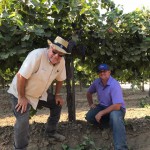

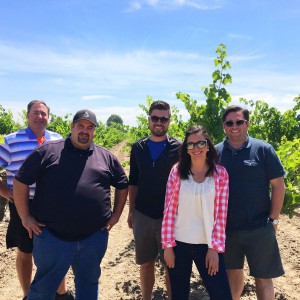
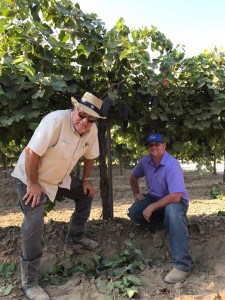
Recent Comments